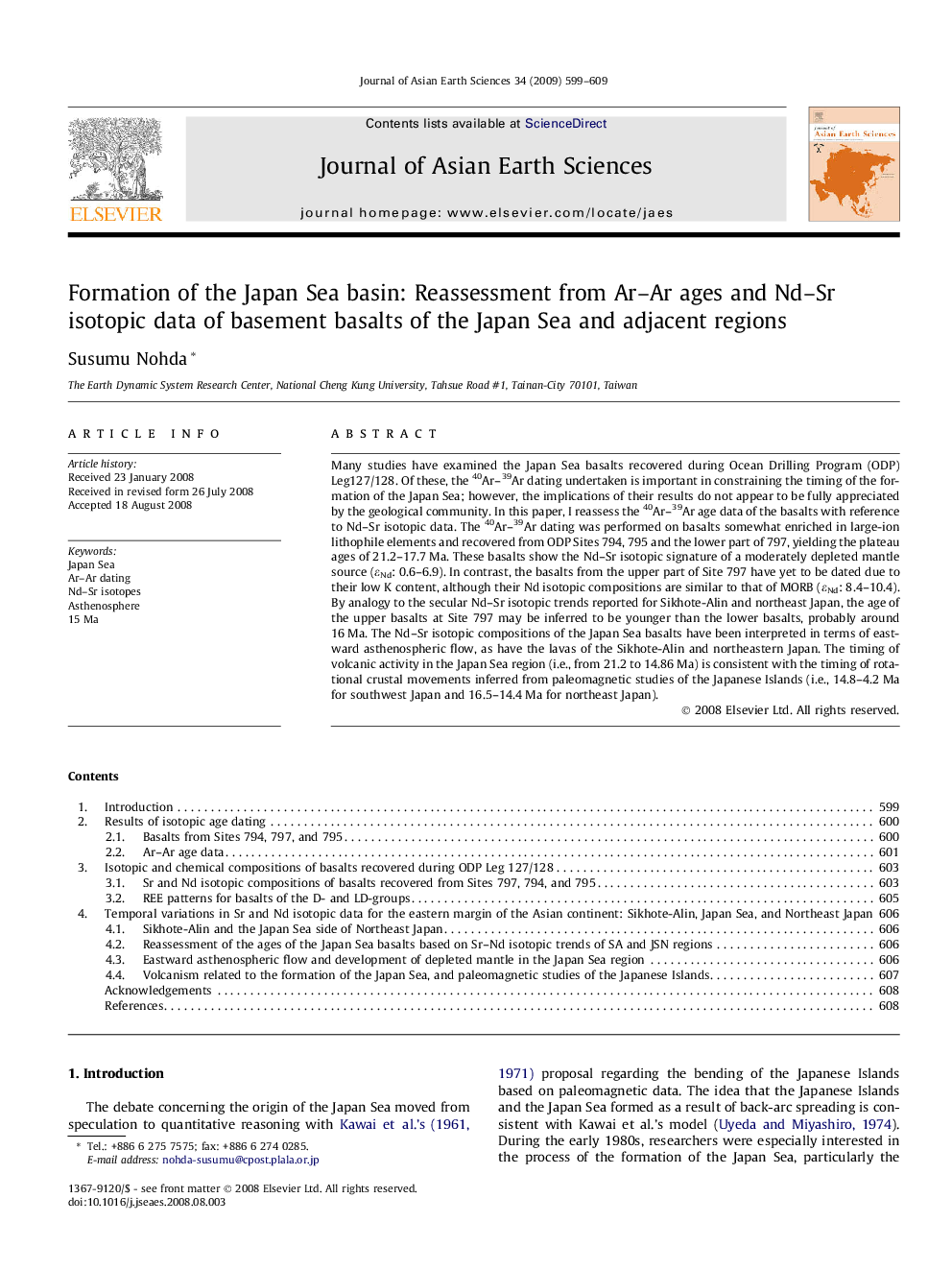| کد مقاله | کد نشریه | سال انتشار | مقاله انگلیسی | نسخه تمام متن |
|---|---|---|---|---|
| 4732199 | 1356849 | 2009 | 11 صفحه PDF | دانلود رایگان |
عنوان انگلیسی مقاله ISI
Formation of the Japan Sea basin: Reassessment from Ar-Ar ages and Nd-Sr isotopic data of basement basalts of the Japan Sea and adjacent regions
دانلود مقاله + سفارش ترجمه
دانلود مقاله ISI انگلیسی
رایگان برای ایرانیان
موضوعات مرتبط
مهندسی و علوم پایه
علوم زمین و سیارات
زمین شناسی
پیش نمایش صفحه اول مقاله

چکیده انگلیسی
Many studies have examined the Japan Sea basalts recovered during Ocean Drilling Program (ODP) Leg127/128. Of these, the 40Ar-39Ar dating undertaken is important in constraining the timing of the formation of the Japan Sea; however, the implications of their results do not appear to be fully appreciated by the geological community. In this paper, I reassess the 40Ar-39Ar age data of the basalts with reference to Nd-Sr isotopic data. The 40Ar-39Ar dating was performed on basalts somewhat enriched in large-ion lithophile elements and recovered from ODP Sites 794, 795 and the lower part of 797, yielding the plateau ages of 21.2-17.7 Ma. These basalts show the Nd-Sr isotopic signature of a moderately depleted mantle source (εNd: 0.6-6.9). In contrast, the basalts from the upper part of Site 797 have yet to be dated due to their low K content, although their Nd isotopic compositions are similar to that of MORB (εNd: 8.4-10.4). By analogy to the secular Nd-Sr isotopic trends reported for Sikhote-Alin and northeast Japan, the age of the upper basalts at Site 797 may be inferred to be younger than the lower basalts, probably around 16 Ma. The Nd-Sr isotopic compositions of the Japan Sea basalts have been interpreted in terms of eastward asthenospheric flow, as have the lavas of the Sikhote-Alin and northeastern Japan. The timing of volcanic activity in the Japan Sea region (i.e., from 21.2 to 14.86 Ma) is consistent with the timing of rotational crustal movements inferred from paleomagnetic studies of the Japanese Islands (i.e., 14.8-4.2 Ma for southwest Japan and 16.5-14.4 Ma for northeast Japan).
ناشر
Database: Elsevier - ScienceDirect (ساینس دایرکت)
Journal: Journal of Asian Earth Sciences - Volume 34, Issue 5, 2 May 2009, Pages 599-609
Journal: Journal of Asian Earth Sciences - Volume 34, Issue 5, 2 May 2009, Pages 599-609
نویسندگان
Susumu Nohda,